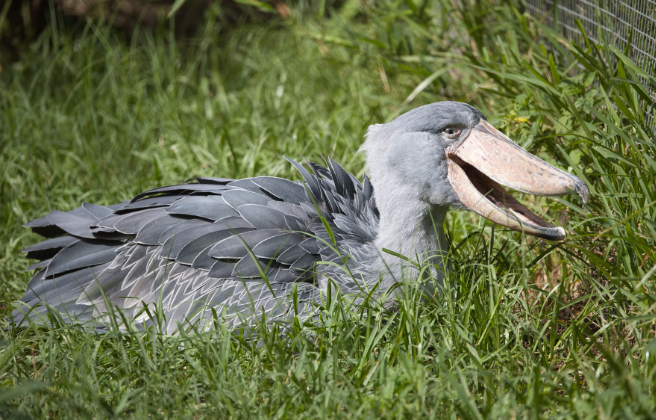Have You Ever Seen a Shoebill Bird Before?

© David Valentine / Unsplash
Have you ever heard of the mysterious and intriguing Shoebill bird? This unique and rare bird has captured the fascination of many bird enthusiasts and nature lovers around the world. With its unique appearance and fascinating behaviors, the Shoebill bird has become a popular subject of interest for bird watchers and conservationists alike. But, how does an animal like this even exist? Let’s find out together!
What Is a Shoebill Bird?
The Shoebill (also known scientifically as Balaeniceps rex) is a large bird species native to the swamps of central tropical Africa. They are mostly found in countries such as Sudan, Uganda, Zambia, and Tanzania. It is also known as the “whalehead”. This is due to its large, broad bill that resembles a Dutch wooden shoe or clog.

The Shoebill stands about 4 feet tall (1.2 meters) and has a wingspan of approximately 8 feet (2.5 meters). It has a massive, shoe-shaped bill, which is used to catch prey such as lungfish, catfish, and even small crocodiles. Despite its size, the Shoebill is surprisingly calm in capturing prey.
History Behind the Shoebill Bird
The Shoebill’s origins trace back to the Eocene epoch, about 50 million years ago. That is when the ancestors of modern birds began to diversify. It belongs to the family Balaenicipitidae, which is monotypic, meaning it contains only one species: You guessed it! The Shoebill.
The Shoebill’s closest relatives are debated among ornithologists, but it shares some characteristics with storks, herons, and pelicans. However, genetics have suggested that its closest living relatives are the pelicans and the hamerkop, another bird found in Africa.
Fun Facts About the Shoebill Bird
Here are some interesting facts that make this bird even more unique than it already seems:
1. The Real Kill Bill
The Shoebill’s large bill, measuring up to nine inches long and four inches wide, may appear comical, but it serves a powerful purpose. This tool is adept at scooping up sizable fish, piercing them with its pointed hook, and swiftly decapitating them with razor-sharp edges before ingestion.

2. The Most Unique Animals Ever
Since their discovery by Western scientists, Shoebills have stirred debate among naturalists and taxonomists regarding their classification. Initially, they were assigned to their own distinct genus within the stork family. However, recent studies, including DNA analysis, reveal that Shoebills are more closely related to pelicans than storks. This ongoing revelation adds to the surprises surrounding the Shoebill’s classification.
3. They Will Beat You in a Stare Down
Shoebills are renowned for their ability to stand motionless for hours, resembling statues, while they intensely scrutinize the water. Their rare blinking and the piercing gaze of their golden, green, or blue eyes can be unsettling, earning them the moniker of the “death stare.” This trait is advantageous as it enables the bird to focus keenly, allowing it to capture the finest prey when it appears.

4. They Don’t Care What You Call Them
As briefly mentioned earlier, the Shoebill derives its name from the shape of its bill, reminiscent of a Dutch clog shoe. Taxonomists who described the species also likened the bill to the head of a baleen whale, leading to the scientific name Balaeniceps rex, translating to “whale-head king.” Informally, the bird is also referred to as the boat bill, the bog bird, and the swamp king.
5. They Have Mastered Patience
Shoebills exhibit remarkable patience, standing silently near water, waiting for the opportune moment. They execute a swift and precise maneuver known as “a collapse,” lunging forward with outstretched wings and plunging bill-first into the water to ambush fish. This action is executed with surprising speed and accuracy, aided by the bird’s sturdy beak and thick skull, which act as shock absorbers, safeguarding it from potential injury.
Conservation and Endangerment Status
The Shoebill is categorized as “Vulnerable,” indicating a high risk of extinction. With an estimated 3,300 to 5,300 mature individuals remaining in the wild and declining populations, their survival is precarious. Threats include hunting, disturbance of nesting sites, habitat destruction, and climate change-induced droughts. Additionally, illegal trade in live birds poses a significant threat, with high mortality rates during capture, transport, and captivity exacerbating the situation.
What do you think of the unique Shoebill bird?
You might also want to read: Is This Prehistoric Bird Still Alive? – New Zealand Says Yes!


